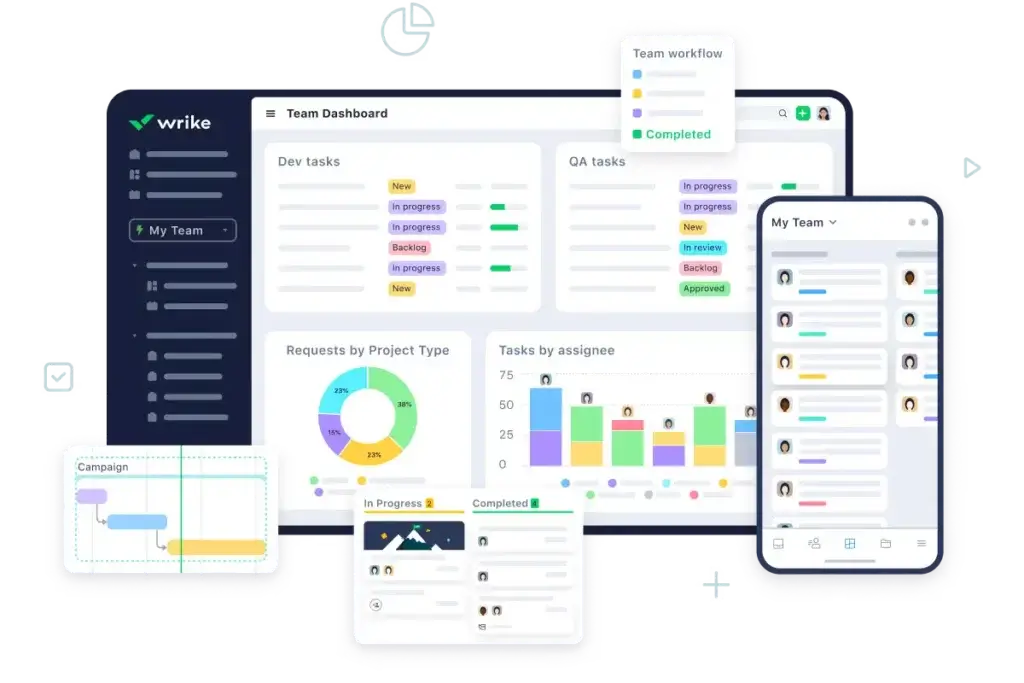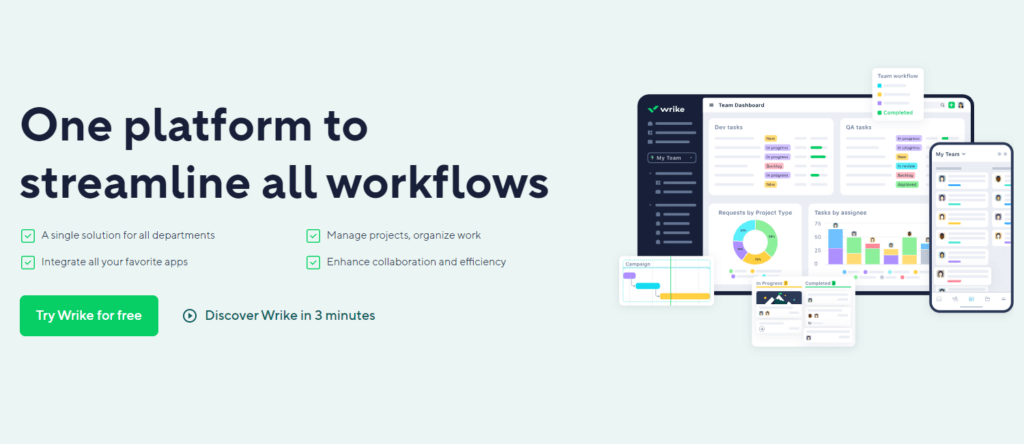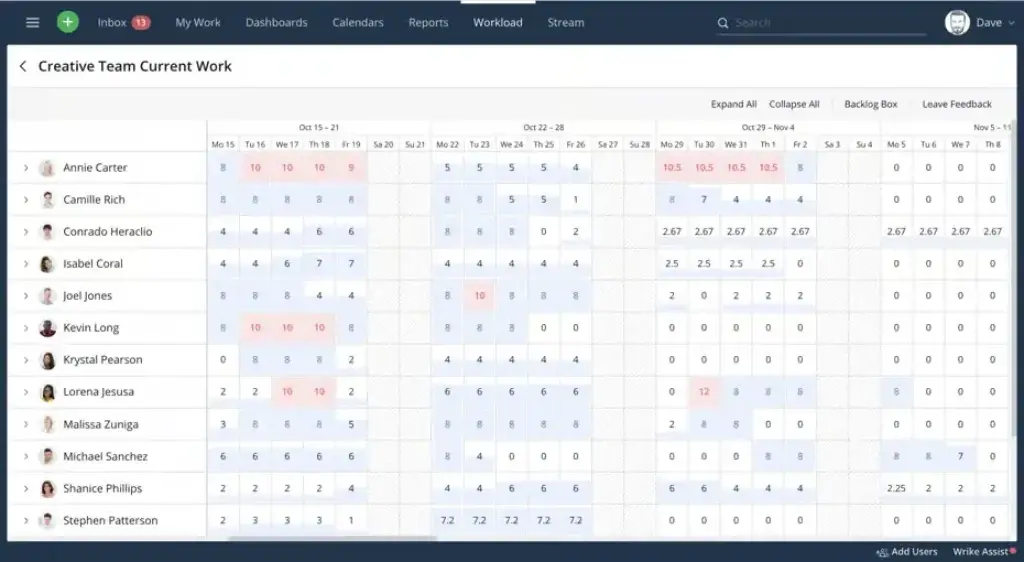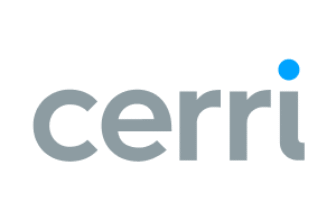Introduction
Wrike is a powerful project management tool designed to help teams collaborate efficiently and stay organized. Whether you’re managing complex projects or routine tasks, Wrike offers a suite of features to streamline workflows and boost productivity.
But is it the right choice for your team?
In this review, we dive deep into Wrike’s features, user experience, and pricing. Discover the pros and cons to see if Wrike is the best fit for your project management needs.
Software Specification
Wrike’s Core Features
Wrike offers a robust set of tools designed to enhance team productivity and streamline project management. Here’s a closer look at its key features:
✅ Task Management Made Easy
Organize and prioritize tasks with customizable workflows and deadlines. Wrike’s intuitive dashboard helps teams stay on track.
📊 Advanced Reporting and Analytics
Gain valuable insights with detailed reports and performance analytics. Visualize project progress using custom charts and dashboards.
🔄 Seamless Collaboration
Communicate effortlessly with team members through in-task comments, file sharing, and real-time updates.
📅 Dynamic Scheduling and Calendar Integration
Easily schedule tasks and synchronize calendars to avoid conflicts. Gantt charts and Kanban boards provide clear project timelines.
🔗 Extensive Integrations
Connect with popular tools like Slack, Google Drive, and Microsoft Teams to enhance productivity.

Pros and Cons
Advantages and Disadvantages
Positive
✅ Robust Project Management
✅ Customizable Dashboards and Workflows
✅ Multiple Project Views
✅ Extensive Integrations
Negative
❌ Steep Learning Curve
❌ High Cost for Small Teams
❌ Limited Time Tracking and Scheduling
❌ Storage Limitations
Wrike is a comprehensive project management tool that offers a range of features designed to enhance team collaboration and efficiency. Below is an updated overview of its advantages and disadvantages:
Pros:
- Robust Project Management: Wrike provides extensive tools for planning, tracking, and managing projects, enabling teams to handle complex workflows effectively.
- Customizable Dashboards and Workflows: Users can tailor dashboards and workflows to meet specific project needs, enhancing flexibility and control.
- Multiple Project Views: Wrike offers various project perspectives, including Gantt charts, Kanban boards, and calendar views, allowing teams to visualize tasks in their preferred format.
- Extensive Integrations: The platform integrates seamlessly with numerous third-party applications such as Salesforce, Tableau, Google Drive, and Microsoft Teams, facilitating a cohesive work environment.
- Enterprise-Grade Security: Wrike prioritizes data protection with advanced security features, ensuring that sensitive information remains secure.
Cons:
- Steep Learning Curve: New users may find Wrike’s extensive features overwhelming, necessitating a significant investment in training and onboarding.
- High Cost for Small Teams: While Wrike offers a free plan with basic features, access to more advanced functionalities requires premium plans that may be cost-prohibitive for individuals or small teams.
- Limited Time Tracking and Scheduling: Wrike’s time tracking and scheduling capabilities are less comprehensive compared to some competitors, which may impact teams requiring detailed time management tools.
- Storage Limitations: All plans, including premium tiers, have storage limits that could be restrictive for teams handling large files or extensive documentation.
- Mobile App Limitations: Users have reported that Wrike’s mobile application lacks some functionalities available on the desktop version, potentially hindering on-the-go project management.

User Experience
User Interface and Experience
Wrike delivers a versatile and intuitive user experience designed to accommodate different team sizes and project complexities. Here’s a breakdown of its usability aspects:
🎨 Clean and Customizable Interface
Wrike’s interface is modern and clutter-free, making it easy for users to navigate.
- Personalized Dashboards: Users can customize their dashboards to display tasks, project timelines, and priorities that matter most to them.
- Drag-and-Drop Functionality: Managing tasks is simplified with drag-and-drop features, enhancing productivity.
📱 Cross-Platform Accessibility
Wrike is accessible across multiple devices, including desktop, tablet, and mobile.
- Consistent User Experience: The mobile app mirrors the desktop version, ensuring a seamless transition between devices.
- Offline Mode: Teams can continue working without interruption, even with limited internet connectivity.
🔄 Real-Time Collaboration and Updates
Wrike excels in team collaboration by offering real-time communication tools.
- In-Task Comments: Team members can leave comments directly on tasks, reducing the need for lengthy email threads.
- Live Notifications: Instant notifications ensure that all team members are up-to-date with project changes.
🧑🏫 Steep Learning Curve for New Users
While feature-rich, Wrike can be overwhelming for beginners.
- Complex Navigation: New users may find the navigation intricate, requiring time to fully master.
- Training Resources Needed: Although Wrike offers tutorials and customer support, teams may need additional training for effective onboarding.
👥 User Permissions and Roles
Wrike offers granular control over user roles and permissions, enhancing security and project management.
- Custom Roles: Admins can define specific roles to control access to tasks, files, and project data.
- Approval Workflows: Streamlined approval processes ensure tasks are reviewed and approved efficiently.

Integrations and Compatibility
How Wrike Integrates with Other Software
Wrike stands out as a highly flexible project management tool with extensive integration capabilities. It seamlessly connects with various third-party applications, enhancing productivity and team collaboration. Here’s an overview of its integration features:
🔗 Extensive Third-Party Integrations
Wrike integrates with over 400 popular tools, making it adaptable to diverse workflows.
- Communication and Collaboration: Connect with Slack, Microsoft Teams, and Zoom for streamlined communication.
- File Sharing and Storage: Sync with Google Drive, OneDrive, Dropbox, and Box to easily manage and share documents.
- Marketing and Automation Tools: Integrate with HubSpot, Marketo, and Mailchimp to align marketing campaigns with project tasks.
- Development and IT Tools: Developers can link Wrike with GitHub, Jira, and Bitbucket to synchronize project updates and code deployments.
🌐 Browser Extensions and Add-ons
Wrike enhances user productivity with browser extensions and app integrations.
- Email Integration: Manage tasks directly from email platforms like Gmail and Outlook.
- Chrome and Firefox Extensions: Save web pages, emails, or any online content as tasks in Wrike for easy reference.
🔄 Seamless Data Sync and Automation
Wrike enables seamless data synchronization and automation to enhance workflow efficiency.
- Automated Workflows: Set up automation rules for repetitive tasks, reducing manual workload.
- Two-Way Sync: Maintain consistency with bi-directional sync for apps like Salesforce and Microsoft Dynamics.
⚙️ Custom API Integration
For businesses with unique needs, Wrike offers flexible API integration.
- Custom Workflows and Features: Developers can build tailored workflows or custom features to meet specific business requirements.
- Data Security and Compliance: Secure API architecture ensures data protection and compliance with enterprise security standards.
🌍 Internationalization and Localization
Wrike supports multiple languages, allowing global teams to collaborate effectively.
- Language Support: Available in English, Spanish, French, German, and more.
- Timezone Synchronization: Ensures accurate scheduling and communication for distributed teams.
Compare with Others
Alternatives to Wrike
Wrike is a powerful project management solution, but how does it compare to its top competitors, monday.com, ClickUp, and Notion? Here’s a detailed comparison of these tools to help you make an informed decision.
| Feature | Wrike | Monday.com | ClickUp | Notion |
| Best For | Large teams, complex projects | Versatile teams, visual planners | Customizable workflows, all-in-one platform | Personal use, note-taking, lightweight project management |
| User Interface | Professional, feature-rich | Colorful, intuitive, highly visual | Customizable, dynamic views | Minimalistic, flexible canvas |
| Collaboration | Real-time communication and approvals | In-app communication, mentions | Chat view, real-time updates | Comments, mentions, shared pages |
| Mobile App | Robust but complex | User-friendly, easy navigation | Full functionality on mobile | Limited but clean design |
| Learning Curve | Steep for beginners | Easy to learn, quick onboarding | Moderate with extensive features | Easy but requires customization |
| Pricing | Free plan, Premium starts at $9.80/user/month | Free plan, Premium starts at $8/user/month | Free plan, Premium starts at $5/user/month | Free plan, Personal Pro starts at $8/month |
🆚 Wrike vs. monday.com
- Similarities: Both offer powerful project management features, customizable dashboards, and advanced reporting.
- Differences:
- Wrike is better suited for complex workflows and enterprise-level security, making it ideal for larger organizations.
- monday.com (full review) is more visually appealing and easier to learn, suitable for creative teams and marketing campaigns.
Choose Wrike for complex project management and enterprise needs. Opt for monday.com if you prefer an intuitive, colorful interface and visual project planning.
🆚 Wrike vs. ClickUp
- Similarities: Both provide customizable workflows, automation, and comprehensive project views like Gantt charts and Kanban boards.
- Differences:
- Wrike focuses on advanced reporting, approval workflows, and robust security.
- ClickUp offers unmatched customization, affordable pricing, and built-in chat features.
Choose Wrike for advanced reporting and enterprise-level security. Pick ClickUp (full review) if you need highly customizable workflows and budget-friendly pricing.
🆚 Wrike vs. Notion
- Similarities: Both support task management, collaboration, and document sharing.
- Differences:
- Wrike is a dedicated project management tool with advanced tracking, reporting, and integrations.
- Notion is a flexible workspace focused on note-taking, knowledge management, and lightweight task management.
Choose Wrike for structured project management and team collaboration. Opt for Notion if you need a flexible canvas for notes, documents, and personal productivity.
🔥 Which One Should You Choose?
- Choose Wrike if you need advanced project management, enterprise security, and detailed reporting.
- Go for Monday.com if you prefer an intuitive, visually appealing interface with easy onboarding.
- Pick ClickUp for customizable workflows, integrated communication, and budget-friendly pricing.
- Opt for Notion if you need a flexible workspace for notes, documents, and lightweight project management.
Pricing
Free vs Paid
Wrike offers a range of pricing plans to accommodate various team sizes and project management needs:
-
Free Plan: Ideal for small teams starting with project management. Includes basic task management features. No cost per user.
-
Team Plan: Designed for small teams requiring effective management tools. Priced at $10 per user/month. Features include unlimited projects and tasks, shared spaces, dashboards, and integrations with popular tools. Supports 2-15 users.
-
Business Plan: Suitable for teams across an organization needing a customizable platform. Priced at $25 per user/month. Offers advanced features like project blueprints, unlimited request forms, resource and capacity planning, and enhanced automation. Supports 5-200 users.
-
Enterprise Plan: Tailored for large teams requiring enterprise-grade security and scalability. Pricing is available upon request. Includes all Business plan features plus SAML-based single sign-on (SSO), two-factor authentication (2FA), custom access roles, and user audit reports. Supports 5 to unlimited users.
-
Pinnacle Plan: For teams with complex work needs seeking advanced tools and analytics. Pricing is available upon request. Offers all Enterprise plan features along with locked spaces, advanced reporting, and business intelligence, and additional storage.
All prices are billed annually. For the most current information and to explore which plan best fits your team’s requirements, visit Wrike’s official pricing page.
Security and Compliance
What about security?
Wrike prioritizes data security and privacy, making it a reliable choice for teams handling sensitive information. Here’s how Wrike ensures your data is protected:
🔒 Enterprise-Grade Security
Wrike employs advanced security measures to protect user data.
- Data Encryption: All data is encrypted both in transit and at rest using AES-256 bit encryption, ensuring secure communication and storage.
- Two-Factor Authentication (2FA): Adds an extra layer of security by requiring a second verification step for user logins.
- Role-Based Access Control: Admins can define specific user roles and permissions, ensuring that sensitive data is only accessible to authorized personnel.
🛡️ Compliance and Certifications
Wrike complies with global security standards, making it suitable for businesses across various industries.
- GDPR and CCPA Compliance: Ensures user data privacy and protection, meeting the requirements of international data regulations.
- ISO/IEC 27001 Certification: Wrike is certified for information security management, reflecting its commitment to maintaining high-security standards.
- SOC 2 Type II Audit: Regular third-party audits verify Wrike’s security controls and data protection policies.
🔐 Secure Collaboration and Data Sharing
Wrike enables secure collaboration while maintaining data integrity.
- User Activity Logs: Comprehensive audit trails monitor all user activities for enhanced accountability.
- Secure File Sharing: All file uploads are scanned for malware, and access is restricted to authorized users.
- Data Residency Options: Enterprises can choose data storage locations to comply with regional regulations.
🧑💻 Security for Remote Teams
Wrike provides robust security for remote and distributed teams.
- Single Sign-On (SSO) Support: Streamlines authentication and enhances security by integrating with SSO providers like Okta and OneLogin.
- Mobile App Security: Secure mobile access with biometric authentication options, ensuring data protection on the go.
- Network Security: DDoS protection and continuous monitoring safeguard against cyber threats and unauthorized access.
Wrike’s Growth Journey
The Company and Product Evolution
Wrike has grown from a startup to a leading project management platform, continually evolving to meet the needs of modern teams. Here’s a look at its journey and product advancements:
🚀 Company Background
- Founded in 2006: Wrike was established by Andrew Filev to help teams collaborate more efficiently and manage complex projects.
- Headquarters and Growth: Headquartered in San Jose, California, Wrike has expanded globally, serving over 20,000 organizations worldwide.
- Acquisition by Citrix: In 2021, Wrike was acquired by Citrix, enhancing its integration capabilities and expanding its enterprise reach.
🔄 Continuous Product Evolution
Wrike continuously updates its platform with innovative features to improve user experience and productivity.
- User-Centric Updates: Regular updates are based on customer feedback, ensuring the platform evolves with user needs.
- Scalable Solutions: From small teams to enterprise-level organizations, Wrike offers scalable solutions that grow with your business.
- Advanced Automation and AI: Recent advancements include AI-powered task automation and predictive analytics, enhancing workflow efficiency.
🌐 Global Expansion and Localization
Wrike is designed for global teams, supporting diverse work environments.
- Multi-Language Support: Available in over 10 languages, including English, Spanish, French, German, and Japanese.
- Data Residency Options: Offers data storage in multiple regions to comply with international data regulations.
- 24/7 Customer Support: Provides round-the-clock customer support across different time zones for a seamless user experience.
🔧 Innovations and Key Milestones
Wrike has introduced groundbreaking features, setting industry standards for project management software.
- 2012: Introduced Gantt charts for enhanced project visualization.
- 2016: Launched Wrike for Marketers, a tailored solution for creative teams and marketing workflows.
- 2019: Released advanced automation features and workflow templates for streamlined project management.
- 2023: Introduced AI-powered task recommendations and predictive analytics, further boosting productivity.
📈 Market Position and Competitiveness
Wrike maintains a competitive edge by consistently innovating and expanding its features.
- Industry Recognition: Recognized as a leader in the project management category by G2 and Gartner.
- Competitive Advantage: Wrike’s robust security, advanced reporting, and extensive integrations differentiate it from competitors like Monday.com, ClickUp, and Asana.
- Enterprise Focus: With enterprise-grade security and scalability, Wrike is ideal for large organizations and complex project environments.
Conclusion
Final thoughts
Is Wrike Worth It?
Wrike is a powerful, feature-rich project management platform designed for teams looking to maximize productivity and efficiency. It stands out with its advanced reporting, enterprise-level security, and extensive integrations, making it a top choice for organizations handling complex workflows and large-scale projects.
Who Should Choose Wrike:
- Medium to large teams needing comprehensive project management tools.
- Enterprises looking for advanced reporting, security, and scalability.
- Teams seeking robust automation and workflow customization.
Who Might Consider Alternatives:
- Small teams or startups with limited budgets.
- Users seeking a more visually appealing or simpler interface (consider monday.com or ClickUp).
- Individuals or freelancers requiring lightweight task management (consider Notion).
Overall Recommendation
Wrike is a powerful investment for businesses aiming to enhance productivity, collaboration, and project visibility. If you’re looking for an all-in-one platform to manage complex projects and integrate seamlessly with your existing tools, Wrike is worth serious consideration.
However, for those who prioritize ease of use, budget-friendly pricing, or a more visually engaging interface, exploring alternatives like monday.com, ClickUp, or Notion may be more suitable.
Final Score: 7.5/10 – Recommended for enterprise-level project management and complex team workflows.
Have more questions?
Frequently Asked Questions
1. Does Wrike support Agile project management?
Yes, Wrike supports Agile workflows with features like Kanban boards, custom workflows, sprint planning, and backlog management. It’s a flexible platform for both Agile and hybrid methodologies.
2. Can Wrike be used for personal task management?
While Wrike is built for teams, individuals can use the free plan for basic task tracking, to-do lists, and personal productivity. However, other tools like Notion or Todoist may offer a more streamlined personal experience.
3. Is Wrike suitable for creative or marketing teams?
Yes. Wrike offers a dedicated solution called Wrike for Marketers, which includes campaign tracking, proofing tools, and pre-built templates for creative workflows.
4. Does Wrike offer resource management features?
Absolutely. Wrike includes workload views, time tracking, and capacity planning tools to help managers balance team resources and avoid overloading.
5. How does Wrike compare to Asana?
Wrike is better suited for large, complex teams needing enterprise-grade security and advanced reporting. Asana is simpler and more intuitive for smaller teams or startups focused on task management.
6. Does Wrike offer native time tracking?
Yes, time tracking is built into Wrike’s Business and higher-tier plans. You can log time on tasks, generate time reports, and monitor team productivity without third-party tools.
7. Can Wrike be integrated with CRM systems?
Yes. Wrike integrates with popular CRM platforms like Salesforce and HubSpot. These integrations help bridge the gap between project execution and customer relationship management.
8. Is Wrike GDPR and HIPAA compliant?
Wrike is GDPR compliant and offers HIPAA compliance features on select enterprise plans. Data protection and privacy are a core part of Wrike’s infrastructure.
9. How customizable is Wrike compared to its competitors?
Wrike allows deep customization of workflows, fields, dashboards, and user permissions. However, ClickUp offers even greater customization at a more affordable price point for some users.
10. What industries use Wrike most?
Wrike is widely adopted in industries like IT, marketing, professional services, construction, and finance. Its flexibility and integrations make it suitable for both technical and non-technical teams.








